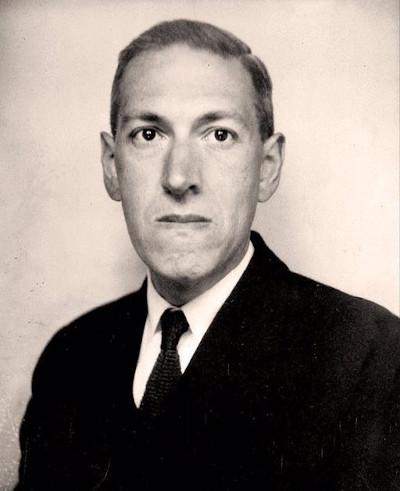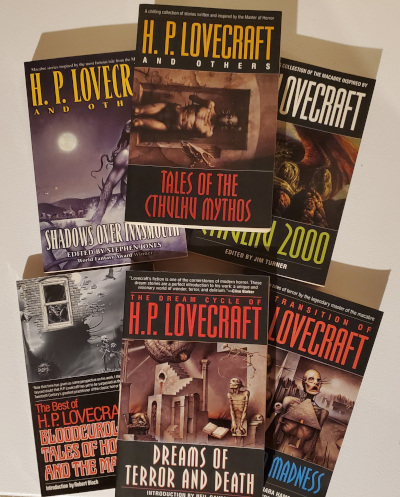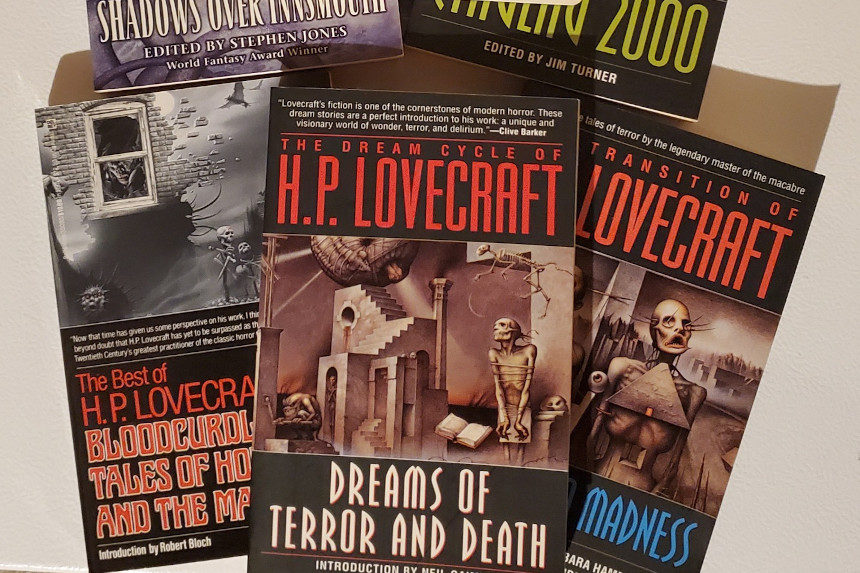Howard Phillips Lovecraft remains, 130 years after his birth and 83 years after his death, a study in contradictions. Mostly unknown during his lifetime, the reputation of his work has grown in the years after to the point where the adjective “Lovecraftian” is universally used to describe otherworldly or “cosmic” horror. He insisted on the use of proper English grammar and pushed to raise the bar for supernatural fiction while publishing primarily in the pulp magazines that were frequently reviled by critics. His view of horror and science fiction expanded the minds and possibilities of the writers he influenced, and yet he himself held intensely bigoted, racist, and misogynistic views. He supported and encouraged a wide circle of writers, but criticized others if they wrote for mainstream publications like, ahem, The Saturday Evening Post. And now, at possibly the height of his literary and cultural influence, Lovecraft is back in the public eye thanks to the new HBO series, Lovecraft Country. Based on the superlative novel by Matt Ruff, the series reckons with Lovecraft’s legacy of intolerance through the lens of a Black cast in the 1950s. One episode in, the series is already inspiring debate, discussion, and myriads of internet think pieces on the racism of Lovecraft. Of course, and possibly unsurprisingly, as is always the case with the best horror, some of the most unsettling themes and images are directly applicable to today’s America.

Although he’s a towering figure in fantasy, horror, and science fiction literary circles, he’s still a sort of peripheral figure to the mainstream. His most famous creation is the tentacle-faced Cthulhu, a monster that has had an increasing presence in popular culture in the past few decades, popping up everywhere from T-shirts to Metallica songs and surprise appearances in films like last year’s Underwater. His work has influenced the likes of Stephen King, Guillermo Del Toro, Neil Gaiman, John Carpenter, Alan Moore, Hellboy creator Mike Mignola, and many more. During his lifetime, he corresponded with writers who became important figures unto themselves, like Robert E. Howard, creator of Conan the Barbarian, Psycho writer Robert Bloch, and August Derleth, founder of the publisher Arkham House (and yes, that’s where the Arkham Asylum of Batman fame got its name).
And so, his influence persists, and therein lies the heart of the problem. Lovecraft isn’t just problematic; his work and essays and his more than 100,000 letters have incontrovertible evidence that he was xenophobic, with negative opinions about people of other colors, countries, and religions. He compared Black people to “beasts,” decried the “mongrelization” of the human race, and wrote a 1912 poem called “On the Creation of N——.” He even owned a cat named, somewhat unbelievably, “N—– Man.” He is perhaps the ultimate avatar of the notion of trying to separate the artist from the art. The majority of today’s talents who look at Lovecraft as an influence readily decry his deeply rooted racism, and note that it’s his broad mythology of gods and monsters that remains the draw.
The official trailer for Lovecraft Country. (Uploaded to YouTube by HBO)
That’s one of the things that’s so potent about Lovecraft Country as both a book and a series. By placing Black characters at the center of the narrative, it’s a refutation of Lovecraft’s views even as it honors his place in the supernatural canon. Then, by taking the extra step and using the Jim Crow-era 1950s, with its deeply-rooted prejudices and unnerving historical details like “sundown towns,” it adds an extra dimension, a real-world dread that overlies the indescribable monsters of Lovecraft’s prose. The most frightening scene in the first episode isn’t the climactic monster attack in the woods; it’s the scene of the three protagonists trying to drive out of the county before sundown as they’re tailed by a racist sheriff who is keeping a very close eye on the speed limit. We may not be able to conceive of Elder Gods from the outer darkness, but the reality of that scene is, especially in light of recent events, all too real.
The phrase “Lovecraft Country” is rooted in literary analysis of his works. A Rhode Islander, Lovecraft set his tales in New England. It may be the area of the Ivy League (and Lovecraft’s own fictional Miskatonic University), but it also contains stretches that are pastoral and parochial. The descriptor is meant to evoke the rolling hills dotted with small towns and country regions that could, behind the veneer of daylight, hide existential dread. Certainly, Ruff’s use of the title for his novel was meant to evoke that dissonance.
The first episode of Lovecraft Country, “Sundown.” (Uploaded to YouTube by HBO)
But the issue also goes beyond that. It’s much harder to separate the artist from the art if you belong to a group that he maligned. If one exists in a kind of bubble of privilege, one might only see the veneer of daylight, and not the darkness that others have to contend with on a daily basis. Lovecraft Country consciously dives in the great contradiction of Lovecraft, acknowledging his work as an elder statesman of the genre while likewise address his deep flaws, flaws that continue to bedevil the United States a century later.

Horror fiction usually arrives right when it’s supposed to, reflecting a society’s fears and demons at the time when the work was created. Lovecraft Country manages to address hundreds of years of horror and decades of division while also being entertaining. Which brings us again to the great contradiction of H.P. Lovecraft: while his own life and work bear the stain of the kind of irrational hate that he harbored, its existence and influence allow others to present some harsh lessons and explore some equally harsh truths. For better or worse, America is Lovecraft’s Country, but he’s gone; horror story or happiness, the ending is up to us.
Featured image: Lovecraft collections published by Del Rey. (Photo by Troy Brownfield. Cover art and book editions ©Del Rey Books)
Become a Saturday Evening Post member and enjoy unlimited access. Subscribe now



